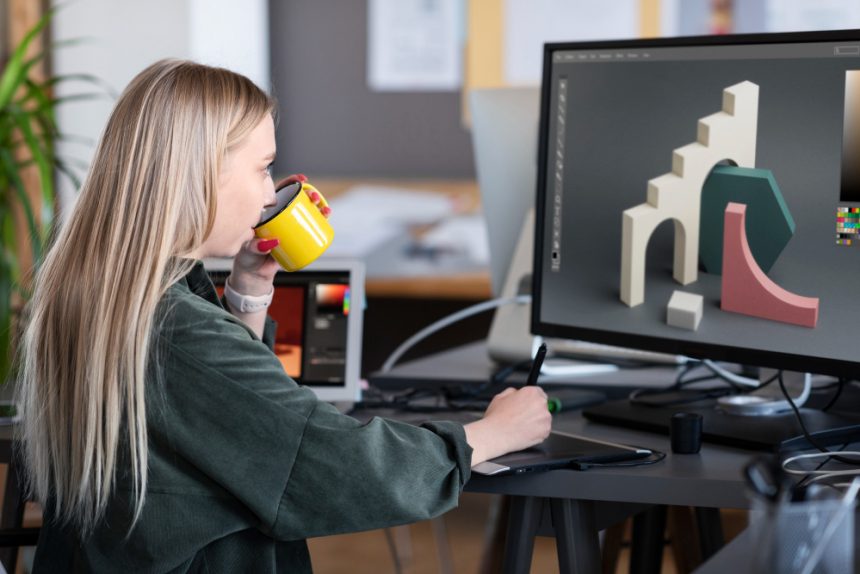Digital design is no stranger to innovation. From pixel-perfect graphics to sleek user interfaces, designers have always pushed the boundaries of creativity and technical skill to produce engaging digital experiences. But recently, a new game-changer has entered the scene: artificial intelligence (AI). This revolutionary force isn’t just tinkering on the edges—it’s fundamentally transforming how we create, think about, and interact with digital content. Let’s explore how AI-driven tools and innovative approaches are making digital design more accessible, smarter, and way more exciting.
How AI Is Changing the Game in Digital Design: Exploring the Cutting-Edge Tools Making Creativity More Accessible Than Ever
Imagine being able to whip up a stunning artwork or a website layout in a fraction of the time it used to take, without sacrificing quality. That’s the power of AI in digital design. The landscape is shifting fast, thanks to a wide array of intelligent tools that empower both seasoned pros and absolute newbies to turn ideas into reality effortlessly.
One of the hottest innovations is AI-powered image generators, like DALL-E or Midjourney. These platforms let you describe an image in simple language, and in seconds, you get a beautifully crafted visual. Want a surreal landscape or a vintage poster with a modern twist? Just type your prompt, and AI does the rest. For designers, this means no more spending hours brainstorming or manually creating assets—AI can generate classic, unique, or highly stylized images at scale.
Beyond images, AI is revolutionizing layout design. Tools like Adobe Sensei or Canva’s AI features suggest optimal arrangements based on content and user preferences. This not only saves time but helps maintain visual harmony, making designs more engaging and balanced—even if you’re not a design expert.
Color selection, often considered a tricky and subjective task, has become much more straightforward with AI. Intelligent color palette generators analyze your chosen images or themes to suggest harmonious shades that fit perfectly. They can even adapt color schemes dynamically based on content updates or user feedback, ensuring your design stays fresh and relevant.
Real-time feedback is also becoming a standard feature. Some platforms employ AI to review your designs and suggest improvements, from font choices to spacing and accessibility considerations. This educational aspect helps less experienced designers learn and grow, democratizing the creative process.
Perhaps most exciting is the advent of generative models that produce entire artworks or design concepts at a speed and scale that would take humans days or weeks. These models can create variations on a theme, explore new directions, or even combine different styles into a cohesive visual.
All these innovations are breaking technical barriers, making professional-grade design more accessible to hobbyists, small startups, or anyone with a creative itch. They’re also speeding up workflows, allowing designers to experiment more freely without being bogged down by repetitive tasks. With AI as your assistant, pushing the boundaries of creativity has never been easier or more fun.
The Future of Digital Design: How AI-Driven Methods Are Paving the Way for Smarter, More Personalized Experiences
While current AI tools are cool and practical, the real promise lies in how these technologies will reshape the future of digital design—and, ultimately, our digital lives. AI isn’t just automating what we already do; it’s opening doors to smarter, more personalized, and more dynamic experiences that adapt to individual users in real-time.
Picture websites that reconfigure themselves on the fly, resizing and reordering content based on who’s viewing them. Perhaps your favorite e-commerce site learns which products you’re most interested in and subtly highlights similar items each time you visit. These are examples of AI-driven personalization, making digital experiences more relevant and engaging.
Machine learning models analyze troves of data to predict trends and understand user preferences deeply. This means designs can be tailored with unprecedented precision—whether it’s marketing visuals that speak directly to your target audience or interfaces that change based on your interaction patterns. As a result, content becomes more relevant, which boosts engagement and conversions.
Deep learning and generative adversarial networks (GANs) are also pushing the boundaries by enabling hyper-realistic image and video creation. Want a photo of an entirely fictional cityscape or a realistic 3D avatar? AI can generate it quickly, opening new avenues for immersive environments, storytelling, and branding.
Another key aspect is AI’s ability to facilitate iterative design through rapid prototyping. By automating routine tasks and suggesting improvements based on data, AI allows designers to focus on creativity and innovation. It’s like having a virtual brainstorming partner who never gets tired or distracted.
Looking ahead, the combination of human creativity and machine intelligence promises a future where design is not only more efficient but also deeply personalized and emotionally resonant. Imagine digital assistants that understand your brand voice or user preferences perfectly, crafting bespoke content on the fly. Or experiences that evolve in response to user feedback, continually leveling up in relevance and aesthetic appeal.
For designers, developers, and brands eager to stay competitive, embracing AI-driven innovations isn’t optional—it’s essential. These tools are not replacing human creativity but amplifying it, allowing us to build smarter, more meaningful digital worlds. The future is bright, and it’s powered by AI, pushing us toward a new era of digital design—where the only limit is imagination.
Wrapping Up
AI is no longer a buzzword; it’s a catalyst reshaping every corner of digital design. From generative tools that produce breathtaking visuals to adaptive interfaces that personalize user experiences, AI’s influence is vast and growing. By embracing these advanced approaches, designers can work faster, smarter, and more creatively than ever before—transforming ideas into stunning realities and crafting digital environments that truly resonate.
Whether you’re a professional designer, a startup founder, or just a curious hobbyist, understanding and leveraging AI tools will keep you ahead of the curve. The digital design landscape is evolving quickly—are you ready to ride the wave?






